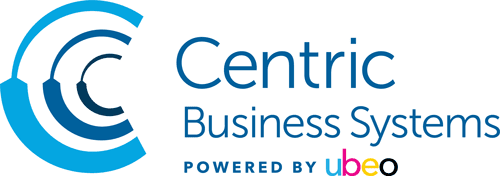What Is a Print Strategy, and How Can It Benefit Your Business?
No matter what industry you work in, you almost certainly rely on a variety of documents to get your job done. But documents aren’t only a benefit to the modern business; they’re also a burden. Estimates suggest that printing these documents consumes between 1 and 3% of an average company’s annual revenue.
If you feel your printing costs are too high, you’re probably not alone—and likely not wrong.
One of the most effective ways companies have tackled the cost problem in office printing is with a print strategy: a well-defined set of goals, guidelines, expectations, and best practices that help businesses manage their print environment.
The Benefits of an Effective Print Strategy
Why manage your print environment? Why worry about an area of business that may not seem easy to improve? There are many benefits to establishing—and sticking to—a print strategy, including:
- Lower printing costs: A well-defined print strategy can lower your overall costs while driving your business toward better efficiency. Think of all the money you’ll save on unnecessary toner cartridges or repeated repairs to a legacy printer.
- Adopt eco-friendly processes: When you know what you’re printing and are more conscious of your printing habits, you’re doing the environment a favor. A print strategy reduces waste and lowers your organization’s carbon footprint.
- Increase team productivity: With outdated technology, excessive waste due to print errors, poorly defined workflows, and more, print environments can be a major source of inefficiency.
- Reduce the IT burden: Your IT staff likely answers print-related help requests more often than others. A print strategy can improve your device uptime, reducing the burden on your IT department.
How to Develop Your Print Strategy
So, you know you need to create or refine your print strategy, but how do you get started? There are several initial steps you can take to determine what your new print strategy needs to include:
 1. Inventory Your Print Equipment
1. Inventory Your Print Equipment
Most companies have no idea how many printers they own, much less how much of their print equipment gets used regularly. For your new print strategy to succeed, you need the right print equipment at your disposal.
Take some time to inventory all printers, fax machines, and other equipment to answer questions like:
- How many devices are in your office compared to the number of people who work there?
- How often and how frequently do employees use each device on your network?
- Which devices require the most frequent or costly maintenance work?
- Which devices have overlapping capabilities, like printers with built-in fax?
When our analysts conduct an assessment for our clients, we usually find that certain devices are either under or over-utilized. These two opposite use cases pose significant problems across your office—overworked devices require more frequent repairs and maintenance, while the underused ones are a waste of equipment investments.
2. Analyze Your Document Workflows
Your copier and print fleets are there to serve your employees and streamline your workflows. Without examining your document workflow, you cannot develop an effective print strategy.
Find out how documents are used across teams and departments. You need to understand the entire workflow a file follows once it comes into your possession. Look at retention policies, digital conversion options, recordkeeping processes, and other areas that influence how much your teams print in a given period.
3. Assess Print Output, Toner Usage, and Other Metrics
How many pieces of paper does your office print each day? How much of that printed material ends up in the recycle bin or hidden under other paper on someone’s desk?
Measure critical print data, like the volume of output from your current environment, your monthly maintenance costs, the rate at which you replace toner and ink, and a host of other details. You’ll likely uncover inefficiencies—like boxes of toner locked in a supply closet, stacks of unused printed materials, or software that’s incompatible with current equipment.
4. Review Your Findings and Determine Next Steps
Once you have a complete picture of your existing print operations, it’s time to identify the most pressing pain points and begin to discuss options to address them.
At Centric, we specialize in the intricacies of document and print management. We conduct comprehensive business technology assessments to help businesses like yours. We help our clients:
- Uncover hidden inefficiencies in print operations
- Learn more about their current print environments
- Identify solutions that reduce printing costs and increase productivity
Remember, uncovering problems in your print environment is not a sign of negligence or mismanagement from your IT department. It takes a lot of work and expertise to create an efficient, effective print fleet and accompanying strategy.
Ready to find out how a print strategy will benefit your team?
Contact our team today to learn more about our business technology assessments.
